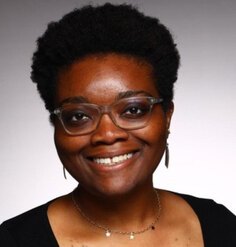5 Questions with Kent Anderson
October 6, 2014
Kent H. Anderson is a Design Principal at Hamilton Anderson Associates. He has provided master planning and site design consulting services to international corporations like MGM Mirage, General Motors, Ford Motor Company and The Dow Chemical Company. His award-winning work includes civic landscapes, campus planning, and design, waterfront development and park master planning and design.
What are you drawing inspiration from right now?
I enjoy reading a wide range of journals to learn more about what others are doing, but also find inspiration in books about exploration and history. I have taken up fly fishing. I am not skilled, but find the experience inspiring. Driving to rural surroundings, pulling on waders, walking to the river, knowing it is never the same, feeling the cold pressure of the water on my legs, settling in as dusk approaches, then making the cast — it puts my mind at ease and opens it to creative thinking.
What potential for sustainability most excites you on one of your current projects?
For us, it’s the potential for collaborative work in moving forward the plan for Detroit Future City. This initiative offers outstanding potential to demonstrate how cities can do things differently. There is an enormous amount of work to be done and the challenges are significant, but it is a wonderful opportunity for landscape architects to help shape what could be a compelling experiment in sustainable/cultural urbanism.
What do you need to know, but you don’t know right now?
Why are landscape architects undervalued as potential multi-disciplinary team leaders, and generally underutilized by our allied professions as part of the teaming environment? I would like to have more confidence in our commitment to advocate allied professions to embrace landscape architects as a resource; and in our commitment to helping clients understand the distinct perspectives we bring to project leadership. I don’t know if we are doing enough politically to engage this support.
A telling example for me is: Michigan has a professional practice act for landscape architects (at least for now), but the State of Michigan does not qualify us as a “professional” when we serve on the board of directors for multi-discipline, architectural design firms. Surveyors and engineers qualify as “professionals” for these same boards. There is something wrong with this.
What advice would you give to emerging leaders in the profession?
Ours is a diversely skilled practice. My focus can be dramatically different from the landscape architect practicing down the street. Varied expertise within what we broadly define as landscape architecture contrasts with straightforward definitions used for other professional disciplines. Introducing yourself as a landscape architect can convey wildly different perceptions to people — ranging from riding a lawnmower to leading the planned revitalization strategy for a major American city. It is a long-standing issue that does not correspond well with the evolution of the profession. Architects do not have this problem. My advice is to invest in creating a public perception to better “professionalize” the profession.
What challenge would you give to emerging leaders in the profession?
I believe strongly that we have the skill and knowledge to be exceptional leaders of multi-disciplinary design teams. The world is a complex place, and the project environment is more complex than ever. Collaboration with other professions is essential to success, yet collaboration requires effective leadership. We can and should embrace this leadership challenge.
Hamilton Anderson was founded in Detroit, Michigan in 1994 when architect Rainy Hamilton, Jr. partnered with landscape architect Kent Anderson. HAA has evolved with emerging, dynamic leaders stretching across a wide array of professional design services, including architecture, landscape architecture, planning, interiors, and urban design. The diversity in background, education, and professional experience is blended with solid experience working on projects ranging from small scale city parks, to technologically, sophisticated new arts high schools, regional master plans, and multi-billion dollar urban design plans.
Any opinions expressed in this interview belong solely to the author. Their inclusion in this article does not reflect endorsement by LAF.











